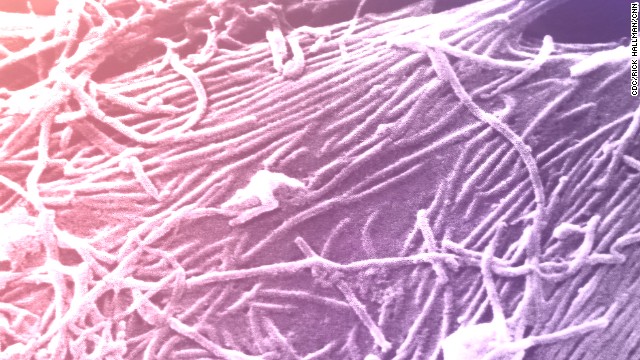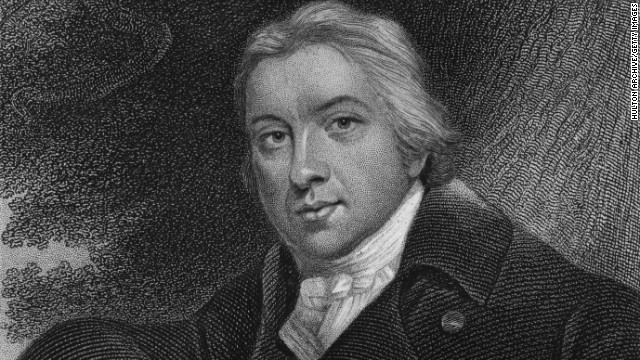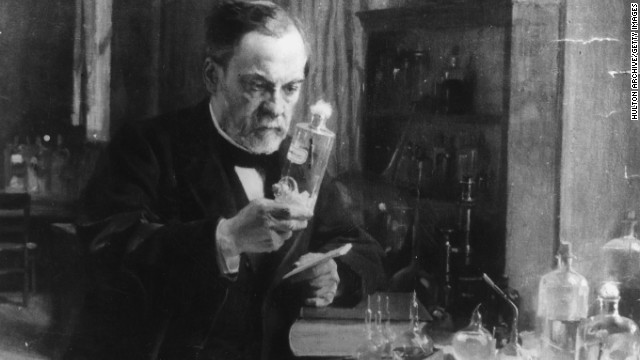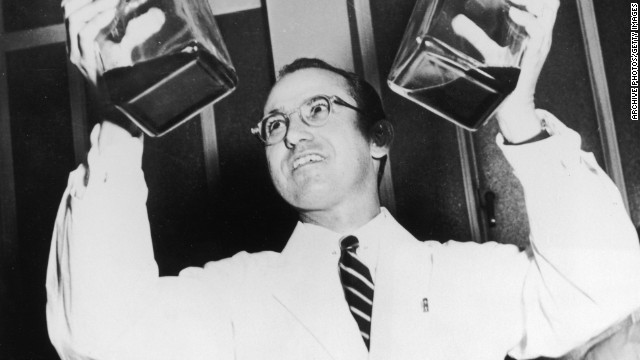 Before the term "vaccination" was coined, millions died every year from infectious diseases such as smallpox, tuberculosis and yellow fever. But the birth of immunology brought with it cures for some of the world's most deadly diseases. Click through the gallery to see who is credited with developing these life-saving vaccines:
Before the term "vaccination" was coined, millions died every year from infectious diseases such as smallpox, tuberculosis and yellow fever. But the birth of immunology brought with it cures for some of the world's most deadly diseases. Click through the gallery to see who is credited with developing these life-saving vaccines:  Dr. Edward Jenner is known as the founder of immunology. He first attempted vaccination against smallpox in 1796 by taking cowpox lesions from a dairymaid's hands and inoculating an 8-year-old boy. On May 8, 1980, the World Health Assembly announced that smallpox had been eradicated across the globe. Samples of the virus are still kept in government laboratories for research as some fear smallpox could one day be used as a bioterrorism agent.
Dr. Edward Jenner is known as the founder of immunology. He first attempted vaccination against smallpox in 1796 by taking cowpox lesions from a dairymaid's hands and inoculating an 8-year-old boy. On May 8, 1980, the World Health Assembly announced that smallpox had been eradicated across the globe. Samples of the virus are still kept in government laboratories for research as some fear smallpox could one day be used as a bioterrorism agent.  You probably know Louis Pasteur as the man who invented pasteurization. But Pasteur also developed the first vaccines for rabies and anthrax. The French microbiologist grew rabies in rabbits first to weaken the virus. Then in 1885, he injected the vaccine into a 9-year-old boy who had been attacked by a dog; it was a success and Pasteur became famous.
You probably know Louis Pasteur as the man who invented pasteurization. But Pasteur also developed the first vaccines for rabies and anthrax. The French microbiologist grew rabies in rabbits first to weaken the virus. Then in 1885, he injected the vaccine into a 9-year-old boy who had been attacked by a dog; it was a success and Pasteur became famous. Veterinarian Gaston Ramon used a formaldehyde solution to deactivate the toxic part of the diphtheria toxin, which allowed scientists to later inject inactive diphtheria into humans as a vaccine. Ramon's discovery helped lead researcher P. Descombey to develop a similar toxoid for tetanus in 1924; it was first used in soldiers during World War II. In 1900, Belgian physician Jules Bordet worked with Octave Gengou to isolate the microbe that causes bordetella pertussis, the pathogen that leads to whooping cough. The isolated bacterium was used to develop the pertussis vaccine. Bordet won the 1919 Nobel Prize in Medicine for his work in immunology.  Camille Guerin, left, and Albert Calmette developed the Bacille Calmette-Guerin vaccine for tuberculosis disease. The vaccine was first used in humans in 1921, after 13 years of animal testing.
Camille Guerin, left, and Albert Calmette developed the Bacille Calmette-Guerin vaccine for tuberculosis disease. The vaccine was first used in humans in 1921, after 13 years of animal testing. The CDC recommends 14 vaccines for American children younger than 6. Of those 14, microbiologist Maurice Hilleman developed eight, including the MMR vaccination and the FDA-approved vaccines for chickenpox, hepatitis A, hepatitis B, meningitis and pneumonia. After his death in 2005, Merck pharmaceuticals dedicated The Maurice R. Hilleman Center for Vaccine Manufacturing in Durham, North Carolina, to its most successful researcher. Although many scientists contributed to the development of the current vaccine for yellow fever, Max Theiler was awarded a Nobel Prize in 1950 for his work. The South African researcher first inoculated mice through their brains, and then took a serum from the protected mice to inject in humans.  Dr. Jonas Salk was something of a scientific hero after developing the polio vaccine. Before it was widely used, more than 45,000 Americans contracted the virus each year. By 1962 -- less than 10 years after it was first tested -- the number of cases had dropped to 910, according to the Salk Institute. "Salk never patented the vaccine, nor did he earn any money from his discovery, preferring to see it distributed as widely as possible," his biography on Salk.edu says.
Dr. Jonas Salk was something of a scientific hero after developing the polio vaccine. Before it was widely used, more than 45,000 Americans contracted the virus each year. By 1962 -- less than 10 years after it was first tested -- the number of cases had dropped to 910, according to the Salk Institute. "Salk never patented the vaccine, nor did he earn any money from his discovery, preferring to see it distributed as widely as possible," his biography on Salk.edu says.
- Vials of smallpox virus that appear to date back to the 1950s found at NIH laboratory
- Only two sites around the globe are allowed to hold the smallpox virus
- The NIH has not identified any infectious exposure risk to lab workers or the public
(CNN) -- You never know what you're going to find in an unused storage room. Employees at the National Institutes of Health, for example, recently discovered some old vials of variola.
You may know variola by its less formal name -- smallpox. Yes, the deadly virus that was the scourge of civilization for centuries. It's been considered an eradicated disease ever since 1980, following successful worldwide vaccination programs. The last known outbreak in the U.S. was in 1947 in New York.
Childhood vaccination programs are safe, seriously
The vials appear to date back to the 1950s, according to the Centers for Disease Control and Prevention, which released a statement on Tuesday about the discovery.
 75 People possibly exposed to anthrax
75 People possibly exposed to anthrax Scientists made the discovery when they were preparing to move a lab from the Food and Drug Administration's Bethesda, Maryland, campus to a different location. The laboratory had been used by the NIH but was transferred to the FDA in 1972. The vials were located in an unused part of a storeroom.
When the scientists found the vials, they immediately put them in a containment lab and on July 1 notified the branch of the government that deals with toxic substances, called the Division of Select Agents and Toxins.
The CDC says there is no evidence that any of the vials was breached, nor were any of the lab workers exposed to the virus.
On Monday, law enforcement agencies transferred the vials to the CDC's high-containment facility in Atlanta. Testing confirmed that there was variola virus DNA in the vials. Scientists will do some more testing to see if it could grow in tissue culture. Once the tests are done, the CDC will destroy the samples.
The CDC is one of only two official World Health Organization designated repositories for smallpox. The other is in Novosibirsk, Russia. The CDC let the WHO know about the find and invited the WHO to witness the destruction of the vials, which is the standard protocol any time anyone finds smallpox samples unexpectedly.
The FBI is investigating how the samples ended up where they did.
Smallpox Fast Facts
No comments:
Post a Comment